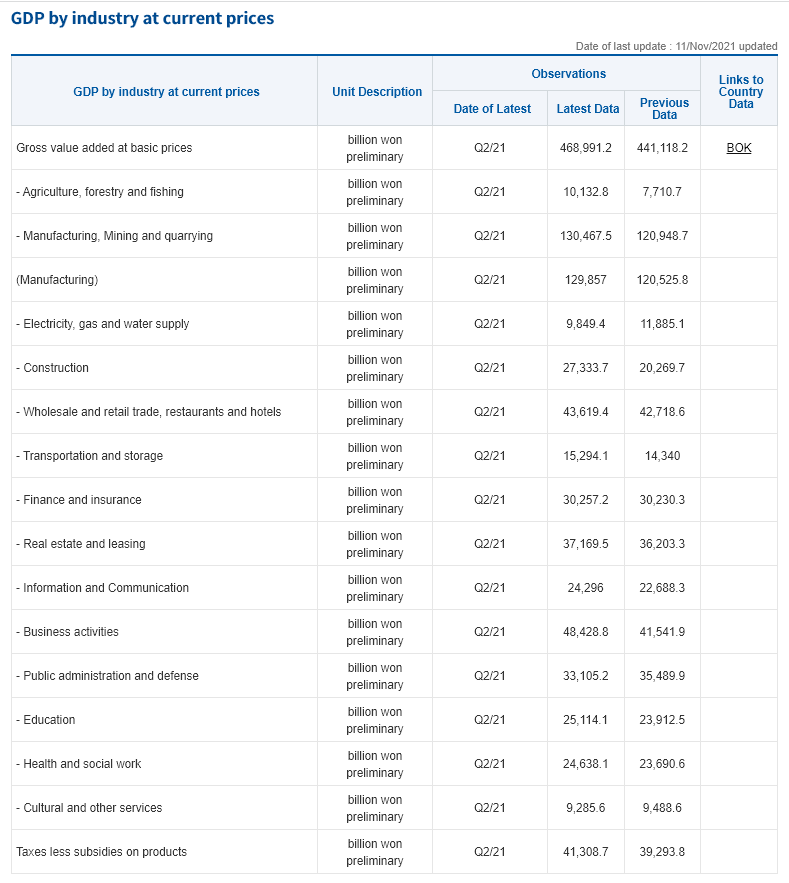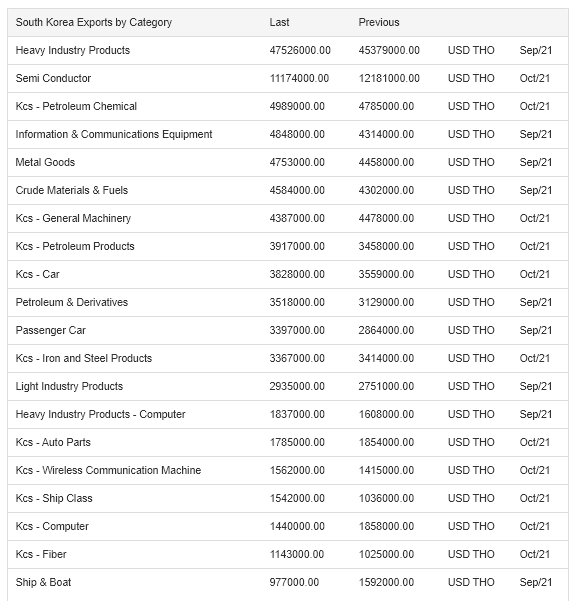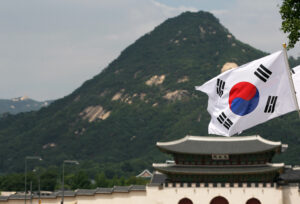If you found this post via search, it probably makes sense to start with the first post in this series. The link to the full series is above.
In this series of posts, I examine seven specific nations that created economic value which transformed them from fairly poor countries to fairly rich countries.
This post focuses on the Republic of Korea, commonly known as South Korea.
Table of Contents
Background information
Contrary to most narratives about the importance of “free markets”, the economic transformation of the Republic of Korea started with a military coup in 1961.
Medieval Korea had such poor experiences with other nations that in the early 1600s they chose to limit their contact with the outside world, and this period lasted for about 250 years, ending in the late 1800s.
European nations then started arriving seeking trade opportunities, with little success.
Japan took a more heavy-handed approach and after Japan beat China and Russia in a war over control of the Korean peninsula, they formally annexed it in 1910.
After WW2, the United States and the Soviet Union divided the Korean peninsula into two halves, the southern one of which became the Republic of Korea in 1948.
The Korean war was devastating in every way possible, costing the lives of 2 million Koreans before ending in 1953.
Then in 1961, the military took over the government of the Republic of Korea, which weirdly, is what started the extreme economic growth that came to be known as the miracle on the Han river.
Major General Park Chung-hee became President and ruled from 1962 until 1979 when he was assassinated by Kim Jae-gyu, the director of the Koren Central Intelligence Agency.
This led to political turmoil and another military coup, which occurred eight days after the assassination (somebody needs to make a move of this – “Eight days in Seoul” or some such).
Full democracy is considered to have arrived in 1987 after Roh Tae-woo became President after the first direct presidential election since the 1979 coup.
The government
The military period
In what illustrates the absurdity of how political labels are often used, President Park Chung-hee was an anti-communist socialist, who appointed civilian economic experts (rather than well-connected cronies) to take charge of economic development, and his government oversaw the creation of large privately-owned conglomerates.
While he seized power in 1961, it is considered that he legitimately won elections in 1963 and 1967, as his economic reforms seemed to be starting to work and became popular.
During the military period, the supremacy of the state became the driving power in the economy of the Republic of Korea.
Businesses were free to engage in business activities approved of and encouraged by the state, and the government focused on performance rather than cronyism.
Except for banks, which were nationalized. Banks were protected with loan guarantees, and in some cases required to loan money to businesses in sectors the government felt were strategic.
Today
The constitution of the Republic of Korea was adopted in 1948, and most recently amended in 1987.
I’m guessing it contains no provision for a military coup, so clearly it was ignored for a while.
Executive branch
The government of the Republic of Koren has an executive branch that consists of the President and his staff. The President is directly elected by the people, serves one five-year term, and additional terms are not permitted.
The President is the highest-ranking political office in the Republic of Korea, and among other things, oversees the military and intelligence operations.
The President is also the chairperson of the State Council, which is what their cabinet is called.
The Prime Minister is appointed by the President, approved by the National Assembly, and may or may not be a member of the National Assembly, and is the Vice-Chairman of the State Council, which makes them the second highest-ranking political office in the Republic of Korea.
Legislative branch
The National Assembly of the Republic of Korea is the single legislative assembly. There is no “house” and “senate” structure here.
There are 300 seats, 253 of whose members are elected in local districts, and 47 of whose members are elected through proportional representation.
Judicial branch
There is a Supreme Court, appellate courts, district courts, family courts, administrative courts, patent courts, and others.
The Supreme Court Chief Justice, along with every member of the Supreme Court is appointed by the President and approved by the National Assembly.
Supreme Court justices serve six-year terms.
Supreme Court Justices can be reappointed, but the Chief Justice can not. The Chief Justice is also required to retire when they become 70 years old.
Politics
As stated above, from 1962 until 1987 the Republic of Korea was run by a few autocratic leaders, some of whom were at time democratically elected in what are considered to be free and fair elections.
As in Taiwan, violent confrontations have occurred within the chamber of the National Assembly, although this was fairly short-lived, occurring from 2004 to 2009.
As far as political parties go, the Wikipedia page on this topic lists 42 active political parties, seven of which currently have seats in the National Assembly, only two of which are identified as “parliamentary group” parties.
It seems that to be considered a parliamentary group party, the party must hold some threshold number of seats in the assembly.
Today, the Democratic Party has a majority with 169 out of 300 seats.
Government corruption
Transparency International is an organization that ranks nations on government corruption.
They rank the Republic of Korea as the 33rd least corrupt government in the world.
For reference, the United States ranks as the 67th least corrupt government, and Canada recently slipped from 8th place to 12th place.
The legal system
The high-level structure of the legal system is identified above in the section about Government.
The basis of their legal system is civil law and has its basis in the Constitution of the Republic of Korea.
The legal system has three tiers (district courts, high courts, and the Supreme Court) and per Article 103 of the Constitution of the Republic of Korea:
Judges rule independently according to their conscience and in conformity with the Constitution and the law.
The banking system
The central bank of the Republic of Korea is the Bank of Korea, and the currency it issues is the South Korean Won.
As in almost all modern nations, the Republic of Korea has a fiat currency and a central bank that seeds a credit expansion banking system.
Healthcare
The Republic of Korea has a system of universal healthcare where patients directly bear some of the costs, but everyone is covered.
An individual’s annual out-of-pocket payment is $769 (or at least was in 2017 which is the last year for which I found data).
While the government health insurance company pays for healthcare, healthcare is provided primarily by the private sector. In 2012, almost all clinics and 94% of hospitals were privately owned.
Natural resources
The Republic of Korea has almost no natural resources.
Direct government support and intervention
Central planning
From the 1961 coup up until the early 2000s, the Republic of Korea had a highly centrally planned economy.
Rigorous education system
An organization named WERN, for World Education News + Reviews, calls the Republic of Korea the most educated country in the world.
A higher percentage of residents of the Republic of Korea completed post-secondary education than any other country. This includes universities, colleges, technical training institutes, and vocational schools.
The government of the Republic of Korea spends 3.4% of GDP on education. For perspective, the USA spends 2.6% and Canada spends 3.3%.
Teachers in the Republic of Korea are the 10th highest paid in the world and it is a highly competitive profession. Of all the people who train to become secondary school teachers, only 20% find jobs as secondary school teachers.
Import substitution
Import substitution was a formal government program for the Republic of Korea as it was for Taiwan.
Import substitution was a program whereby the Republic of Korea increased exports in order to obtain foreign currency, in order to use it to buy the stuff needed to enable them to build stuff for export.
The government was very proactive in encouraging exports, using tools such as direct financing, tax benefits, tariff exemptions, accelerate depreciation, creation of special reserve funds, etc.
The purpose of this was larger scale export promotion, enabled by being able to buy needed equipment using the foreign currency reserves accumulated by the prior exports.
Export promotion
Starting in 1961, after a military coup, the Republic of Korea closed their economy to imported consumer products and only imported raw materials needed to boost their exports.
The government pushed exporting as a patriotic duty and in addition to specific assistance as described above, presented awards to those who achieved new high levels of exports.
Imports were focused on raw materials, to encourage and allow for the export of finished goods.
Direct foreign investment
The Republic of Korea has been very open to direct foreign investment, to the point of allowing a considerable amount of what is called Greenfield Investments which is where a foreign company creates a local subsidiary (foreign of course to them) and builds the entire operation from the ground up.
Direct foreign investment in 2020 was $9.2B and in 2020 there were 81 greenfield investments with an aggregate value of $3.5B.

Total foreign direct investment since 1970 has grown significantly.

Important partnerships
Chaebols
This might not fit the traditional definition of “partnerships” but the economy of the Republic of Korea is dominated by family-owned diversified conglomerates, such as Hyundai, Samsun, and LG Corporation, who receive government support, legal protections, and very low cost, and sometimes free, financing.
GDP by sector
The chart below shows GDP by sector for the fiscal year ending 2021 Q2.

Exports by sector
This chart shows exports by sector.

Wealth and income equality
The most widely used measure of income distribution is the Gini index. It condenses several data points into a single number from 0 (perfect equality) to 1 (perfect inequality), although it is sometimes expressed as a number between 0 and 100.
The Republic of Korea has a 2021 Gini index of 35.4, which ranks it as the 102nd most unequal country on earth, which is not bad considering 172 countries are being scored.
For comparison, the Gini index of the United States is 41.1 (54th most unequal) and for Canada is 33.3 (127th most unequal).
In closing
Similar to Singapore and Taiwan, the Republic of Korea is an interesting case study in economic development through authoritarian government, but to a degree far beyond anything that occurred in Singapore or Taiwan.
The very idea of economic growth through military coups flies in the face of the neoclassical and Austrian economic narratives of leaving the marketing alone.
Government corruption is fairly low and inequality is fairly low.
I confess I’m having trouble reconciling what I’ve learned of how economies should work with what I’ve learned of the “economic miracle” of South Korea.



